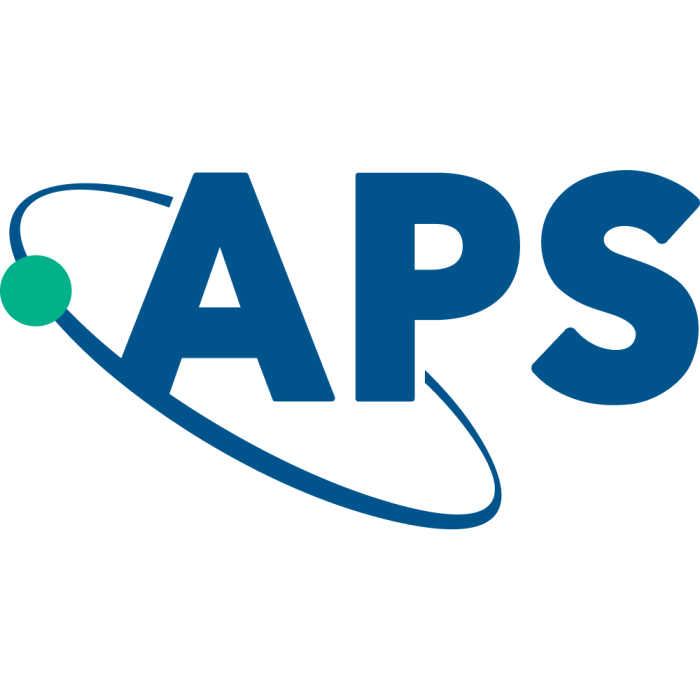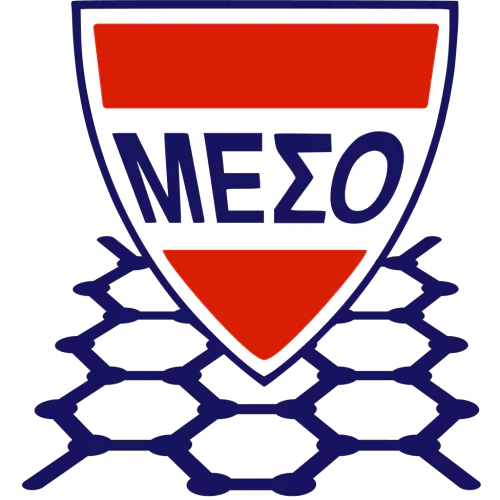Physical Review A, volume 118, issue 4, pages 990-1000
Far Infrared Transmission through Superconducting Films
Publication type: Journal Article
Publication date: 1960-05-15
Journal:
Physical Review A
Quartile SCImago
Q1
Quartile WOS
Q2
Impact factor: 2.9
ISSN: 24699926, 24699934, 0031899X, 10502947, 10941622
General Physics and Astronomy
Abstract
The far infrared transmission through films of superconducting and normal lead, tin, indium, and mercury has been measured in the wavelength region between 0.1 and 1.1 mm. The transmission data have been analyzed to find the ratio of the complex conductivity in the superconducting state to that in the normal state, as a function of frequency. The width of the energy gap at 0\ifmmode^\circ\else\textdegree\fi{}K may be estimated from the frequency of the extrapolated cutoff of the real part, ${\ensuremath{\sigma}}_{1}(\ensuremath{\omega})$, of the superconducting conductivity. The values so obtained are 4.0\ifmmode\pm\else\textpm\fi{}0.5, 3.3\ifmmode\pm\else\textpm\fi{}0.2, and $3.9\ifmmode\pm\else\textpm\fi{}0.3k{T}_{c}$ for lead, tin, and indium, respectively. These values are in good agreement with those obtained in other experiments on bulk samples. The frequency dependence of $\frac{{\ensuremath{\sigma}}_{1}(\ensuremath{\omega})}{{\ensuremath{\sigma}}_{N}}$ is in qualitative agreement with the results of a calculation by Mattis and Bardeen based on the theory of Bardeen, Cooper, and Schrieffer, except for an unexpected hump in ${\ensuremath{\sigma}}_{1}(\ensuremath{\omega})$ for lead and (tentatively) mercury at low frequencies. This hump may be due to the production of collective excitations or an anisotropy in the energy gap. It has also been found that a magnetic field as high as 8000 gauss applied in the plane of a lead film about 12 A thick has only a very small effect on the electromagnetic properties of the film. This is not surprising, in view of the results of the microwave experiments of Pippard and of Spiewak.
Top-30
Citations by journals
|
5
10
15
20
25
|
|
|
Physical Review A
21 publications, 18.92%
|
|
|
Physical Review B
19 publications, 17.12%
|
|
|
Physica C: Superconductivity and its Applications
7 publications, 6.31%
|
|
|
Physical Review Letters
5 publications, 4.5%
|
|
|
Journal of Applied Physics
3 publications, 2.7%
|
|
|
Cryogenics
3 publications, 2.7%
|
|
|
Infrared Physics
3 publications, 2.7%
|
|
|
Reviews of Modern Physics
2 publications, 1.8%
|
|
|
Proceedings of the Royal Society A: Mathematical, Physical and Engineering Sciences
2 publications, 1.8%
|
|
|
Journal of Low Temperature Physics
2 publications, 1.8%
|
|
|
Journal of Physics E Scientific Instruments
2 publications, 1.8%
|
|
|
Physica B+C
2 publications, 1.8%
|
|
|
Progress in Low Temperature Physics
2 publications, 1.8%
|
|
|
IEEE Transactions on Applied Superconductivity
1 publication, 0.9%
|
|
|
Physics of the Solid State
1 publication, 0.9%
|
|
|
International Journal of Infrared and Millimeter Waves
1 publication, 0.9%
|
|
|
Physics Today
1 publication, 0.9%
|
|
|
Physical Review Research
1 publication, 0.9%
|
|
|
Physica B: Condensed Matter
1 publication, 0.9%
|
|
|
European Physical Journal B
1 publication, 0.9%
|
|
|
IEEE Transactions on Magnetics
1 publication, 0.9%
|
|
|
Physica Scripta
1 publication, 0.9%
|
|
|
Solid State Communications
1 publication, 0.9%
|
|
|
Journal of Physics and Chemistry of Solids
1 publication, 0.9%
|
|
|
Physica Status Solidi (B): Basic Research
1 publication, 0.9%
|
|
|
Solid-State Electronics
1 publication, 0.9%
|
|
|
Technical Physics Letters
1 publication, 0.9%
|
|
|
Science
1 publication, 0.9%
|
|
|
Advances in Condensed Matter Physics
1 publication, 0.9%
|
|
|
5
10
15
20
25
|
Citations by publishers
|
5
10
15
20
25
30
35
40
45
50
|
|
|
American Physical Society (APS)
48 publications, 43.24%
|
|
|
Elsevier
22 publications, 19.82%
|
|
|
Springer Nature
6 publications, 5.41%
|
|
|
American Institute of Physics (AIP)
4 publications, 3.6%
|
|
|
IEEE
3 publications, 2.7%
|
|
|
IOP Publishing
3 publications, 2.7%
|
|
|
Pleiades Publishing
2 publications, 1.8%
|
|
|
The Royal Society
2 publications, 1.8%
|
|
|
Wiley
1 publication, 0.9%
|
|
|
American Association for the Advancement of Science (AAAS)
1 publication, 0.9%
|
|
|
Hindawi Limited
1 publication, 0.9%
|
|
|
Treatise
1 publication, 0.9%
|
|
|
5
10
15
20
25
30
35
40
45
50
|
- We do not take into account publications without a DOI.
- Statistics recalculated only for publications connected to researchers, organizations and labs registered on the platform.
- Statistics recalculated weekly.
{"yearsCitations":{"type":"bar","data":{"show":true,"labels":[1960,1961,1962,1963,1964,1965,1966,1967,1968,1969,1970,1971,1972,1973,1974,1975,1976,1977,1978,1979,1980,1981,1982,1983,1984,1985,1986,1987,1988,1989,1990,1991,1992,1993,1994,1995,1996,1997,1998,1999,2000,2001,2002,2003,2004,2005,2006,2007,2008,2009,2010,2011,2012,2013,2014,2015,2016,2017,2018,2019,2020,2021,2022,2023],"ids":[0,0,0,0,0,0,0,0,0,0,0,0,0,0,0,0,0,0,0,0,0,0,0,0,0,0,0,0,0,0,0,0,0,0,0,0,0,0,0,0,0,0,0,0,0,0,0,0,0,0,0,0,0,0,0,0,0,0,0,0,0,0,0,0],"codes":[0,0,0,0,0,0,0,0,0,0,0,0,0,0,0,0,0,0,0,0,0,0,0,0,0,0,0,0,0,0,0,0,0,0,0,0,0,0,0,0,0,0,0,0,0,0,0,0,0,0,0,0,0,0,0,0,0,0,0,0,0,0,0,0],"imageUrls":["","","","","","","","","","","","","","","","","","","","","","","","","","","","","","","","","","","","","","","","","","","","","","","","","","","","","","","","","","","","","","","",""],"datasets":[{"label":"Citations number","data":[2,7,3,2,8,2,2,3,4,3,2,1,1,3,3,2,3,0,1,1,1,0,1,0,0,1,2,0,0,5,3,4,4,4,2,1,0,1,2,2,3,0,2,0,1,1,0,0,2,0,1,0,0,3,3,0,0,1,1,0,1,0,3,1],"backgroundColor":["#3B82F6","#3B82F6","#3B82F6","#3B82F6","#3B82F6","#3B82F6","#3B82F6","#3B82F6","#3B82F6","#3B82F6","#3B82F6","#3B82F6","#3B82F6","#3B82F6","#3B82F6","#3B82F6","#3B82F6","#3B82F6","#3B82F6","#3B82F6","#3B82F6","#3B82F6","#3B82F6","#3B82F6","#3B82F6","#3B82F6","#3B82F6","#3B82F6","#3B82F6","#3B82F6","#3B82F6","#3B82F6","#3B82F6","#3B82F6","#3B82F6","#3B82F6","#3B82F6","#3B82F6","#3B82F6","#3B82F6","#3B82F6","#3B82F6","#3B82F6","#3B82F6","#3B82F6","#3B82F6","#3B82F6","#3B82F6","#3B82F6","#3B82F6","#3B82F6","#3B82F6","#3B82F6","#3B82F6","#3B82F6","#3B82F6","#3B82F6","#3B82F6","#3B82F6","#3B82F6","#3B82F6","#3B82F6","#3B82F6","#3B82F6"],"percentage":["1.8","6.31","2.7","1.8","7.21","1.8","1.8","2.7","3.6","2.7","1.8","0.9","0.9","2.7","2.7","1.8","2.7",0,"0.9","0.9","0.9",0,"0.9",0,0,"0.9","1.8",0,0,"4.5","2.7","3.6","3.6","3.6","1.8","0.9",0,"0.9","1.8","1.8","2.7",0,"1.8",0,"0.9","0.9",0,0,"1.8",0,"0.9",0,0,"2.7","2.7",0,0,"0.9","0.9",0,"0.9",0,"2.7","0.9"],"barThickness":null}]},"options":{"indexAxis":"x","maintainAspectRatio":true,"scales":{"y":{"ticks":{"precision":0,"autoSkip":false,"font":{"family":"Montserrat"},"color":"#000000"},"stacked":false},"x":{"ticks":{"stepSize":1,"precision":0,"font":{"family":"Montserrat"},"color":"#000000"},"stacked":false}},"plugins":{"legend":{"position":"top","labels":{"font":{"family":"Montserrat"},"color":"#000000"}},"title":{"display":true,"text":"Citations per year","font":{"size":24,"family":"Montserrat","weight":600},"color":"#000000"}}}},"journals":{"type":"bar","data":{"show":true,"labels":["Physical Review A","Physical Review B","Physica C: Superconductivity and its Applications","Physical Review Letters","Journal of Applied Physics","Cryogenics","Infrared Physics","Reviews of Modern Physics","Proceedings of the Royal Society A: Mathematical, Physical and Engineering Sciences","Journal of Low Temperature Physics","Journal of Physics E Scientific Instruments","Physica B+C","Progress in Low Temperature Physics","IEEE Transactions on Applied Superconductivity","Physics of the Solid State","International Journal of Infrared and Millimeter Waves","Physics Today","Physical Review Research","Physica B: Condensed Matter","European Physical Journal B","IEEE Transactions on Magnetics","Physica Scripta","Solid State Communications","Journal of Physics and Chemistry of Solids","Physica Status Solidi (B): Basic Research","Solid-State Electronics","Technical Physics Letters","Science","Advances in Condensed Matter Physics"],"ids":[12492,25280,9363,4343,11951,7683,25933,7721,17107,19063,25492,25471,39674,14501,11703,26572,18300,26813,18171,18165,8304,19105,13041,19478,11584,4338,25144,7711,14904],"codes":[0,0,0,0,0,0,0,0,0,0,0,0,0,0,0,0,0,0,0,0,0,0,0,0,0,0,0,0,0],"imageUrls":["\/storage\/images\/resized\/nrK64iXHTzj43wMrfN1ZoUQ0vanswGzWPN45K3jA_medium.webp","\/storage\/images\/resized\/nrK64iXHTzj43wMrfN1ZoUQ0vanswGzWPN45K3jA_medium.webp","\/storage\/images\/resized\/GDnYOu1UpMMfMMRV6Aqle4H0YLLsraeD9IP9qScG_medium.webp","\/storage\/images\/resized\/nrK64iXHTzj43wMrfN1ZoUQ0vanswGzWPN45K3jA_medium.webp","\/storage\/images\/resized\/ARM4e6URKRsbRZvIF0vFis9DjxGloBjnBYJXbHmZ_medium.webp","\/storage\/images\/resized\/GDnYOu1UpMMfMMRV6Aqle4H0YLLsraeD9IP9qScG_medium.webp","\/storage\/images\/resized\/GDnYOu1UpMMfMMRV6Aqle4H0YLLsraeD9IP9qScG_medium.webp","\/storage\/images\/resized\/nrK64iXHTzj43wMrfN1ZoUQ0vanswGzWPN45K3jA_medium.webp","\/storage\/images\/resized\/BHBStD1OkQqtKFRRjS5njgNe7bXCAEgaDQVK7GTA_medium.webp","\/storage\/images\/resized\/voXLqlsvTwv5p3iMQ8Dhs95nqB4AXOG7Taj7G4ra_medium.webp","\/storage\/images\/resized\/LsKy6OnmmmRGcAU6CZgWQvNiP1polbaSLNrN7zqj_medium.webp","\/storage\/images\/resized\/GDnYOu1UpMMfMMRV6Aqle4H0YLLsraeD9IP9qScG_medium.webp","\/storage\/images\/resized\/GDnYOu1UpMMfMMRV6Aqle4H0YLLsraeD9IP9qScG_medium.webp","\/storage\/images\/resized\/6scCJegesojp2jubwY3uKCzTAmgsaH2GIFlg6Hfk_medium.webp","\/storage\/images\/resized\/oZgeErrVFhuDksyqFURLvYS1wtVSBWczh001igGo_medium.webp","\/storage\/images\/resized\/voXLqlsvTwv5p3iMQ8Dhs95nqB4AXOG7Taj7G4ra_medium.webp","\/storage\/images\/resized\/ARM4e6URKRsbRZvIF0vFis9DjxGloBjnBYJXbHmZ_medium.webp","\/storage\/images\/resized\/nrK64iXHTzj43wMrfN1ZoUQ0vanswGzWPN45K3jA_medium.webp","\/storage\/images\/resized\/GDnYOu1UpMMfMMRV6Aqle4H0YLLsraeD9IP9qScG_medium.webp","\/storage\/images\/resized\/voXLqlsvTwv5p3iMQ8Dhs95nqB4AXOG7Taj7G4ra_medium.webp","\/storage\/images\/resized\/6scCJegesojp2jubwY3uKCzTAmgsaH2GIFlg6Hfk_medium.webp","\/storage\/images\/resized\/LsKy6OnmmmRGcAU6CZgWQvNiP1polbaSLNrN7zqj_medium.webp","\/storage\/images\/resized\/GDnYOu1UpMMfMMRV6Aqle4H0YLLsraeD9IP9qScG_medium.webp","\/storage\/images\/resized\/GDnYOu1UpMMfMMRV6Aqle4H0YLLsraeD9IP9qScG_medium.webp","\/storage\/images\/resized\/bRyGpdm98BkAUYiK1YFNpl5Z7hPu6Gd87gbIeuG3_medium.webp","\/storage\/images\/resized\/GDnYOu1UpMMfMMRV6Aqle4H0YLLsraeD9IP9qScG_medium.webp","\/storage\/images\/resized\/oZgeErrVFhuDksyqFURLvYS1wtVSBWczh001igGo_medium.webp","\/storage\/images\/resized\/s10mcsCV4OAUg9O2KrqOquQC0PhyLMI8hUUkuflM_medium.webp","\/storage\/images\/resized\/hqfzhQAjTGlNSRs6yzFNITgjSMm9Jr2QuotJHIvE_medium.webp"],"datasets":[{"label":"","data":[21,19,7,5,3,3,3,2,2,2,2,2,2,1,1,1,1,1,1,1,1,1,1,1,1,1,1,1,1],"backgroundColor":["#3B82F6","#3B82F6","#3B82F6","#3B82F6","#3B82F6","#3B82F6","#3B82F6","#3B82F6","#3B82F6","#3B82F6","#3B82F6","#3B82F6","#3B82F6","#3B82F6","#3B82F6","#3B82F6","#3B82F6","#3B82F6","#3B82F6","#3B82F6","#3B82F6","#3B82F6","#3B82F6","#3B82F6","#3B82F6","#3B82F6","#3B82F6","#3B82F6","#3B82F6"],"percentage":[18.92,17.12,6.31,4.5,2.7,2.7,2.7,1.8,1.8,1.8,1.8,1.8,1.8,0.9,0.9,0.9,0.9,0.9,0.9,0.9,0.9,0.9,0.9,0.9,0.9,0.9,0.9,0.9,0.9],"barThickness":13}]},"options":{"indexAxis":"y","maintainAspectRatio":false,"scales":{"y":{"ticks":{"precision":0,"autoSkip":false,"font":{"family":"Montserrat"},"color":"#000000"},"stacked":false},"x":{"ticks":{"stepSize":null,"precision":0,"font":{"family":"Montserrat"},"color":"#000000"},"stacked":false}},"plugins":{"legend":{"position":"top","labels":{"font":{"family":"Montserrat"},"color":"#000000"}},"title":{"display":true,"text":"Journals","font":{"size":24,"family":"Montserrat","weight":600},"color":"#000000"}}}},"publishers":{"type":"bar","data":{"show":true,"labels":["American Physical Society (APS)","Elsevier","Springer Nature","American Institute of Physics (AIP)","IEEE","IOP Publishing","Pleiades Publishing","The Royal Society","Wiley","American Association for the Advancement of Science (AAAS)","Hindawi Limited","Treatise"],"ids":[1539,17,8,250,6953,2075,101,259,11,189,6921,19947],"codes":[0,0,0,0,0,0,0,0,0,0,0,0],"imageUrls":["\/storage\/images\/resized\/nrK64iXHTzj43wMrfN1ZoUQ0vanswGzWPN45K3jA_medium.webp","\/storage\/images\/resized\/GDnYOu1UpMMfMMRV6Aqle4H0YLLsraeD9IP9qScG_medium.webp","\/storage\/images\/resized\/voXLqlsvTwv5p3iMQ8Dhs95nqB4AXOG7Taj7G4ra_medium.webp","\/storage\/images\/resized\/ARM4e6URKRsbRZvIF0vFis9DjxGloBjnBYJXbHmZ_medium.webp","\/storage\/images\/resized\/6scCJegesojp2jubwY3uKCzTAmgsaH2GIFlg6Hfk_medium.webp","\/storage\/images\/resized\/LsKy6OnmmmRGcAU6CZgWQvNiP1polbaSLNrN7zqj_medium.webp","\/storage\/images\/resized\/oZgeErrVFhuDksyqFURLvYS1wtVSBWczh001igGo_medium.webp","\/storage\/images\/resized\/BHBStD1OkQqtKFRRjS5njgNe7bXCAEgaDQVK7GTA_medium.webp","\/storage\/images\/resized\/bRyGpdm98BkAUYiK1YFNpl5Z7hPu6Gd87gbIeuG3_medium.webp","\/storage\/images\/resized\/s10mcsCV4OAUg9O2KrqOquQC0PhyLMI8hUUkuflM_medium.webp","\/storage\/images\/resized\/hqfzhQAjTGlNSRs6yzFNITgjSMm9Jr2QuotJHIvE_medium.webp","\/storage\/images\/resized\/RDjCyK0EeGcvCADZmTYNc7or5CHxiTVyZYNcCYMw_medium.webp"],"datasets":[{"label":"","data":[48,22,6,4,3,3,2,2,1,1,1,1],"backgroundColor":["#3B82F6","#3B82F6","#3B82F6","#3B82F6","#3B82F6","#3B82F6","#3B82F6","#3B82F6","#3B82F6","#3B82F6","#3B82F6","#3B82F6"],"percentage":[43.24,19.82,5.41,3.6,2.7,2.7,1.8,1.8,0.9,0.9,0.9,0.9],"barThickness":13}]},"options":{"indexAxis":"y","maintainAspectRatio":false,"scales":{"y":{"ticks":{"precision":0,"autoSkip":false,"font":{"family":"Montserrat"},"color":"#000000"},"stacked":false},"x":{"ticks":{"stepSize":null,"precision":0,"font":{"family":"Montserrat"},"color":"#000000"},"stacked":false}},"plugins":{"legend":{"position":"top","labels":{"font":{"family":"Montserrat"},"color":"#000000"}},"title":{"display":true,"text":"Publishers","font":{"size":24,"family":"Montserrat","weight":600},"color":"#000000"}}}},"yearsCitationsQuartiles":{"type":"bar","data":{"show":true,"labels":[1960,1961,1962,1963,1964,1965,1966,1967,1968,1969,1970,1971,1972,1973,1974,1975,1976,1977,1978,1979,1980,1981,1982,1983,1984,1985,1986,1987,1988,1989,1990,1991,1992,1993,1994,1995,1996,1997,1998,1999,2000,2001,2002,2003,2004,2005,2006,2007,2008,2009,2010,2011,2012,2013,2014,2015,2016,2017,2018,2019,2020,2021,2022,2023],"ids":[],"codes":[],"imageUrls":[],"datasets":[{"label":"Q4","backgroundColor":"rgb(221,90,78)","data":[0,0,0,0,0,0,0,0,0,0,0,0,0,0,0,0,0,0,0,0,0,0,0,0,0,0,0,0,0,0,0,0,0,0,0,0,0,0,0,0,0,0,0,0,0,0,0,0,1,0,0,0,0,0,0,0,0,0,0,0,0,0,0,0],"percentage":["0","0","0","0","0","0","0","0","0","0","0","0","0","0","0","0","0","0","0","0","0","0","0","0","0","0","0","0","0","0","0","0","0","0","0","0","0","0","0","0","0","0","0","0","0","0","0","0","0.9","0","0","0","0","0","0","0","0","0","0","0","0","0","0","0"]},{"label":"Q3","backgroundColor":"rgb(251, 163,83)","data":[0,0,0,0,0,0,0,0,0,0,0,0,0,0,0,0,0,0,0,0,0,0,0,0,0,0,0,0,0,0,0,0,0,1,0,0,0,0,0,0,0,0,1,0,0,0,0,0,0,0,0,0,0,2,0,0,0,0,0,0,0,0,0,0],"percentage":["0","0","0","0","0","0","0","0","0","0","0","0","0","0","0","0","0","0","0","0","0","0","0","0","0","0","0","0","0","0","0","0","0","0.9","0","0","0","0","0","0","0","0","0.9","0","0","0","0","0","0","0","0","0","0","1.8","0","0","0","0","0","0","0","0","0","0"]},{"label":"Q2","backgroundColor":"rgb(232, 213, 89)","data":[1,0,0,1,0,0,0,0,1,0,1,0,0,1,1,1,0,0,0,0,0,0,1,0,0,0,0,0,0,4,0,1,3,0,0,1,0,0,0,2,2,0,0,0,0,0,0,0,0,0,0,0,0,0,0,0,0,0,0,0,0,0,2,0],"percentage":["0.9","0","0","0.9","0","0","0","0","0.9","0","0.9","0","0","0.9","0.9","0.9","0","0","0","0","0","0","0.9","0","0","0","0","0","0","3.6","0","0.9","2.7","0","0","0.9","0","0","0","1.8","1.8","0","0","0","0","0","0","0","0","0","0","0","0","0","0","0","0","0","0","0","0","0","1.8","0"]},{"label":"Q1","backgroundColor":"rgb(164, 207, 99)","data":[1,6,3,1,7,2,2,2,3,3,0,1,0,0,2,0,1,0,0,1,0,0,0,0,0,0,1,0,0,1,2,0,0,1,2,0,0,0,1,0,0,0,1,0,0,1,0,0,1,0,1,0,0,0,1,0,0,1,1,0,1,0,0,0],"percentage":["0.9","5.41","2.7","0.9","6.31","1.8","1.8","1.8","2.7","2.7","0","0.9","0","0","1.8","0","0.9","0","0","0.9","0","0","0","0","0","0","0.9","0","0","0.9","1.8","0","0","0.9","1.8","0","0","0","0.9","0","0","0","0.9","0","0","0.9","0","0","0.9","0","0.9","0","0","0","0.9","0","0","0.9","0.9","0","0.9","0","0","0"]},{"label":"Quartile not defined","backgroundColor":"#E5E7EB","data":[0,1,0,0,1,0,0,1,0,0,1,0,1,2,0,1,2,0,1,0,1,0,0,0,0,1,1,0,0,0,1,3,1,2,0,0,0,1,1,0,1,0,0,0,1,0,0,0,0,0,0,0,0,1,2,0,0,0,0,0,0,0,1,1],"percentage":["0","0.9","0","0","0.9","0","0","0.9","0","0","0.9","0","0.9","1.8","0","0.9","1.8","0","0.9","0","0.9","0","0","0","0","0.9","0.9","0","0","0","0.9","2.7","0.9","1.8","0","0","0","0.9","0.9","0","0.9","0","0","0","0.9","0","0","0","0","0","0","0","0","0.9","1.8","0","0","0","0","0","0","0","0.9","0.9"]}]},"options":{"indexAxis":"x","maintainAspectRatio":true,"scales":{"y":{"ticks":{"precision":0,"autoSkip":false,"font":{"family":"Montserrat"},"color":"#000000"},"stacked":true},"x":{"ticks":{"stepSize":1,"precision":0,"font":{"family":"Montserrat"},"color":"#000000"},"stacked":true}},"plugins":{"legend":{"position":"top","labels":{"font":{"family":"Montserrat"},"color":"#000000"}},"title":{"display":true,"text":"Citations quartiles by SCImago per year","font":{"size":24,"family":"Montserrat","weight":600},"color":"#000000"}}}},"yearsCitationsQuartilesWs":{"type":"bar","data":{"show":true,"labels":[1960,1961,1962,1963,1964,1965,1966,1967,1968,1969,1970,1971,1972,1973,1974,1975,1976,1977,1978,1979,1980,1981,1982,1983,1984,1985,1986,1987,1988,1989,1990,1991,1992,1993,1994,1995,1996,1997,1998,1999,2000,2001,2002,2003,2004,2005,2006,2007,2008,2009,2010,2011,2012,2013,2014,2015,2016,2017,2018,2019,2020,2021,2022,2023],"ids":[],"codes":[],"imageUrls":[],"datasets":[{"label":"Q4","backgroundColor":"rgb(221,90,78)","data":[0,0,0,0,0,0,0,0,0,0,0,0,0,0,0,0,0,0,0,0,0,0,0,0,0,0,0,0,0,0,0,0,0,1,0,0,0,0,0,0,0,0,1,0,0,0,0,0,1,0,0,0,0,2,0,0,0,0,0,0,0,0,0,0],"percentage":["0","0","0","0","0","0","0","0","0","0","0","0","0","0","0","0","0","0","0","0","0","0","0","0","0","0","0","0","0","0","0","0","0","0.9","0","0","0","0","0","0","0","0","0.9","0","0","0","0","0","0.9","0","0","0","0","1.8","0","0","0","0","0","0","0","0","0","0"]},{"label":"Q3","backgroundColor":"rgb(251, 163,83)","data":[1,0,0,1,0,0,0,0,0,0,0,0,0,1,0,1,0,0,0,0,0,0,1,0,0,0,0,0,0,3,0,1,2,0,0,1,0,0,0,1,1,0,0,0,0,0,0,0,0,0,0,0,0,0,0,0,0,0,0,0,0,0,2,0],"percentage":["0.9","0","0","0.9","0","0","0","0","0","0","0","0","0","0.9","0","0.9","0","0","0","0","0","0","0.9","0","0","0","0","0","0","2.7","0","0.9","1.8","0","0","0.9","0","0","0","0.9","0.9","0","0","0","0","0","0","0","0","0","0","0","0","0","0","0","0","0","0","0","0","0","1.8","0"]},{"label":"Q2","backgroundColor":"rgb(232, 213, 89)","data":[1,4,3,0,5,2,1,1,4,3,1,1,0,0,2,0,1,0,0,1,0,0,0,0,0,0,1,0,0,2,2,0,1,1,2,0,0,0,1,1,1,0,1,0,0,1,0,0,1,0,1,0,0,0,1,0,0,1,1,0,0,0,0,0],"percentage":["0.9","3.6","2.7","0","4.5","1.8","0.9","0.9","3.6","2.7","0.9","0.9","0","0","1.8","0","0.9","0","0","0.9","0","0","0","0","0","0","0.9","0","0","1.8","1.8","0","0.9","0.9","1.8","0","0","0","0.9","0.9","0.9","0","0.9","0","0","0.9","0","0","0.9","0","0.9","0","0","0","0.9","0","0","0.9","0.9","0","0","0","0","0"]},{"label":"Q1","backgroundColor":"rgb(164, 207, 99)","data":[0,2,0,1,2,0,1,1,0,0,0,0,0,0,1,0,0,0,0,0,0,0,0,0,0,0,0,0,0,0,0,0,0,0,0,0,0,0,0,0,0,0,0,0,0,0,0,0,0,0,0,0,0,0,0,0,0,0,0,0,0,0,0,0],"percentage":["0","1.8","0","0.9","1.8","0","0.9","0.9","0","0","0","0","0","0","0.9","0","0","0","0","0","0","0","0","0","0","0","0","0","0","0","0","0","0","0","0","0","0","0","0","0","0","0","0","0","0","0","0","0","0","0","0","0","0","0","0","0","0","0","0","0","0","0","0","0"]},{"label":"Quartile not defined","backgroundColor":"#E5E7EB","data":[0,1,0,0,1,0,0,1,0,0,1,0,1,2,0,1,2,0,1,0,1,0,0,0,0,1,1,0,0,0,1,3,1,2,0,0,0,1,1,0,1,0,0,0,1,0,0,0,0,0,0,0,0,1,2,0,0,0,0,0,1,0,1,1],"percentage":["0","0.9","0","0","0.9","0","0","0.9","0","0","0.9","0","0.9","1.8","0","0.9","1.8","0","0.9","0","0.9","0","0","0","0","0.9","0.9","0","0","0","0.9","2.7","0.9","1.8","0","0","0","0.9","0.9","0","0.9","0","0","0","0.9","0","0","0","0","0","0","0","0","0.9","1.8","0","0","0","0","0","0.9","0","0.9","0.9"]}]},"options":{"indexAxis":"x","maintainAspectRatio":true,"scales":{"y":{"ticks":{"precision":0,"autoSkip":false,"font":{"family":"Montserrat"},"color":"#000000"},"stacked":true},"x":{"ticks":{"stepSize":1,"precision":0,"font":{"family":"Montserrat"},"color":"#000000"},"stacked":true}},"plugins":{"legend":{"position":"top","labels":{"font":{"family":"Montserrat"},"color":"#000000"}},"title":{"display":true,"text":"Citations quartiles by WoS per year","font":{"size":24,"family":"Montserrat","weight":600},"color":"#000000"}}}}}
Are you a researcher?
Create a profile to get free access to personal recommendations for colleagues and new articles.
Metrics
Cite this
GOST |
RIS |
BibTex |
MLA
Cite this
GOST
Copy
Ginsberg D. M., Tinkham M. Far Infrared Transmission through Superconducting Films // Physical Review A. 1960. Vol. 118. No. 4. pp. 990-1000.
GOST all authors (up to 50)
Copy
Ginsberg D. M., Tinkham M. Far Infrared Transmission through Superconducting Films // Physical Review A. 1960. Vol. 118. No. 4. pp. 990-1000.
Cite this
RIS
Copy
TY - JOUR
DO - 10.1103/PhysRev.118.990
UR - https://doi.org/10.1103/PhysRev.118.990
TI - Far Infrared Transmission through Superconducting Films
T2 - Physical Review A
AU - Ginsberg, D. M.
AU - Tinkham, M.
PY - 1960
DA - 1960/05/15 00:00:00
PB - American Physical Society (APS)
SP - 990-1000
IS - 4
VL - 118
SN - 2469-9926
SN - 2469-9934
SN - 0031-899X
SN - 1050-2947
SN - 1094-1622
ER -
Cite this
BibTex
Copy
@article{1960_Ginsberg,
author = {D. M. Ginsberg and M. Tinkham},
title = {Far Infrared Transmission through Superconducting Films},
journal = {Physical Review A},
year = {1960},
volume = {118},
publisher = {American Physical Society (APS)},
month = {may},
url = {https://doi.org/10.1103/PhysRev.118.990},
number = {4},
pages = {990--1000},
doi = {10.1103/PhysRev.118.990}
}
Cite this
MLA
Copy
Ginsberg, D. M., and M. Tinkham. “Far Infrared Transmission through Superconducting Films.” Physical Review A, vol. 118, no. 4, May. 1960, pp. 990-1000. https://doi.org/10.1103/PhysRev.118.990.












